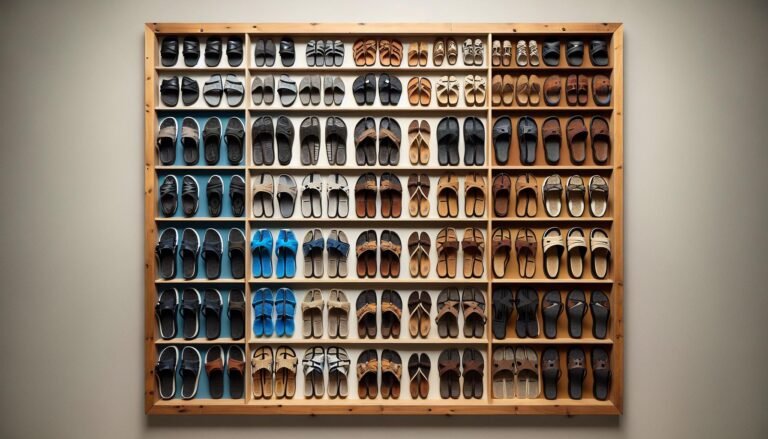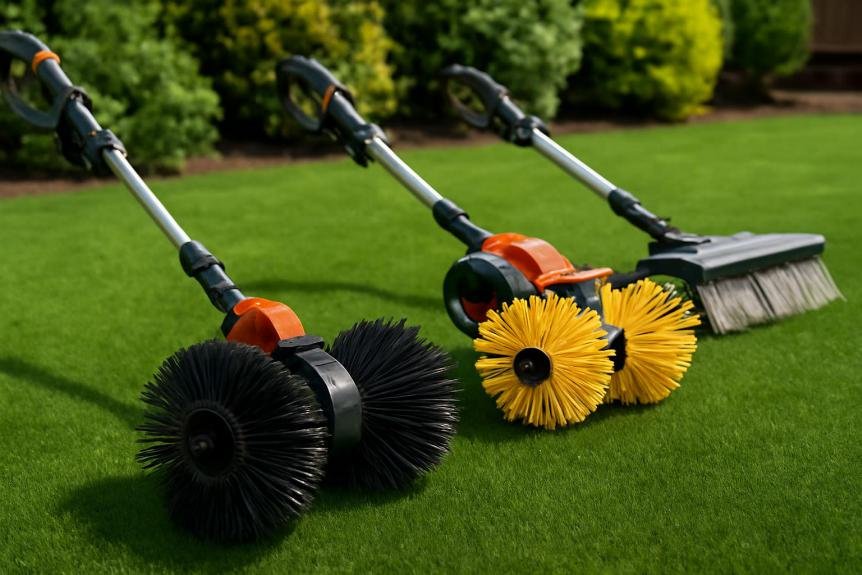Are Slippers Good for Your Feet? The Importance of Choosing Right
When it comes to comfort at home, slippers are often the go-to choice for many of us. I’ve always wondered, though, are slippers actually good for our feet? It’s a question that’s sparked quite the debate among footwear enthusiasts and health professionals alike.
On one hand, slipping into a cozy pair of slippers feels like a hug for your feet after a long day. But on the other, I’ve heard claims that they might not provide the support our feet truly need. So, I decided to dive deep into this topic, exploring both the benefits and potential drawbacks of wearing slippers. Join me as we unravel the mystery together and find out if our beloved slippers are friend or foe to our feet.
Key Takeaways
- Slippers provide unmatched comfort and warmth, contributing to relaxation and better sleep, especially during colder months. However, it’s essential to choose slippers that offer adequate support to avoid potential foot health issues.
- Proper foot protection, enhanced blood circulation, and stress reduction on the feet are key benefits of wearing slippers. High-quality slippers with good support can help prevent foot-related issues by offering a healthier foot posture.
- The drawbacks of wearing slippers, such as lack of proper arch support, the risk of slipping and falling, and insufficient foot protection, highlight the importance of careful slipper selection for both safety and foot health.
- Key features to look for in the right slippers include proper arch support, non-slip soles for safety, breathable materials for comfort, and a good fit to prevent instability or discomfort, ensuring a positive impact on overall foot health and safety.
The Comfort of Slippers

I can’t deny that one of the primary reasons I gravitate towards slippers is the undeniable comfort they provide. After a long day, slipping my feet into a pair of soft, cushiony slippers feels like a small yet significant luxury. There’s something about the warmth and softness that seems to instantly relax me, making it a key part of my unwinding ritual at home.
Yet, it’s not just about the immediate comfort. I’ve noticed that wearing slippers around the house keeps my feet warm, which, according to some studies, can aid in overall relaxation and even help with sleep. This warmth isn’t just a matter of comfort but can also have tangible benefits for my well-being, especially during colder months when it’s crucial to keep the whole body warm.
On the flip side, there’s a debate about whether this comfort might come at the cost of foot health. Some experts argue that the typical slipper lacks the necessary support for the arches of our feet, potentially leading to discomfort or even pain over time. It’s suggested that if slippers are going to be a staple in your home wardrobe, you should look for options that offer adequate support. They exist, but you might have to search a bit harder and possibly pay a bit more.
The variety of slippers available on the market does offer some solutions to this issue. I’ve come across several brands claiming to provide “ergonomic” or “orthopedic” support in their slippers, aiming to combine the best of both worlds: comfort and proper foot support. Testing a pair, I found that they could indeed offer a markedly different experience compared to the typical, flat slipper.
Providing warmth, a sense of relaxation, and potentially aiding in better sleep, slippers undoubtedly have their comfort-related benefits. However, understanding and mitigating the potential drawbacks with thoughtful choices can help ensure that this comfort doesn’t come at the expense of our foot health.
Benefits of Wearing Slippers

When I think about the comfort and warmth slippers offer, I can’t help but appreciate their undeniable benefits. Slippers aren’t just about keeping our feet warm; they play a significant role in our overall well-being at home. Let’s dive into the advantages of slipping into those cozy companions after a long day.
Firstly, slippers offer protection. Walking barefoot at home might seem harmless, but it exposes our feet to potential dangers. From stepping on unexpected objects to the cold floor, slippers act as a barrier that shields our feet from minor injuries and discomfort. The warmth provided by slippers isn’t just about feeling cozy; it’s also about promoting better blood circulation. Cold floors can cause our blood vessels to constrict, reducing circulation. Wearing slippers helps in maintaining a comfortable body temperature, enhancing blood flow especially important during colder months.
Moreover, there’s something about wearing slippers that reduces stress on our feet. Hard floors can take a toll on our feet, leading to aches and pains. Quality slippers with proper support can mitigate this stress, offering not only comfort but also aiding in the prevention of foot-related issues. For those concerned about foot health, the market has evolved to include slippers designed with ergonomic and orthopedic benefits, providing arch support, and promoting a healthy foot posture. Opting for these can enhance the positive effects slippers have on our foot health.
Lastly, the convenience and practicality slippers offer cannot be understated. They’re easy to slip on and off, making them perfect for those moments when you need to step outside quickly or when you’re winding down. With the vast array of styles, materials, and support levels available, finding the perfect pair that suits your needs and preferences has never been easier.
By understanding and choosing the right type of slippers, I’ve realized that one can enjoy the coziness they offer without compromising on foot health.
Drawbacks of Wearing Slippers

While I’ve shared the multitude of benefits associated with wearing slippers, it’s also crucial to consider the other side of the coin. Slippers, especially those lacking proper support, come with their share of drawbacks.
First and foremost, poor arch support in many slippers can lead to foot problems. Unlike well-designed shoes that provide the necessary support for our feet, some slippers are too flat, which can contribute to or exacerbate issues like plantar fasciitis or flat feet.
Another point to consider is the risk of slipping and falling. Slippers, particularly those with smooth soles, can be dangerously slippery on smooth surfaces. This is especially concerning for older adults or anyone with balance issues. Safety should always be a top priority, and unfortunately, not all slippers are made with non-slip soles.
Here’s a quick rundown of the main drawbacks:
- Lack of proper arch support
- Risk of slipping and falling
- May not provide enough protection for the feet
Additionally, some slippers may not offer adequate protection for the feet. While they’re great for indoor use, stepping outside even for a moment in slippers can expose your feet to various dangers, such as sharp objects or rough surfaces. This lack of protection isn’t something to overlook, especially for those who enjoy spending a lot of time in their outdoor spaces.
Ultimately, while slippers offer comfort and convenience, selecting the right pair that offers support, safety, and protection is key. It’s worth investing a bit of time and money into finding slippers that are not only cozy but also beneficial for your feet in the long run.
Choosing the Right Slippers for Your Feet

When it comes to picking out the perfect pair of slippers to support both comfort and foot health, I’ve learned that several key features can’t be overlooked.
Arch Support is paramount. Many people, including myself, underestimate the importance of proper arch support in slippers. Wearing slippers with insufficient support can exacerbate foot issues such as plantar fasciitis. During my search for the ideal slippers, I focused on finding options that provide a similar level of support to regular shoes. This has made a significant difference in my overall foot health and comfort.
Non-Slip Soles are another non-negotiable. The safety aspect of slippers is crucial, as I’ve heard too many stories of slips and falls at home due to smooth-soled slippers. Opting for slippers with textured or rubber soles can greatly minimize the risk of accidents, ensuring a safer experience around the house.
Materials matter as well. Breathable materials such as wool or cotton allow your feet to remain comfortable without overheating or excessive sweating. Additionally, choosing slippers made from natural materials can help prevent any skin irritations or discomfort, especially for those with sensitive skin.
Finally, consider the fit. Slippers that are too loose can contribute to instability, increasing the risk of falls, while those that are too tight can cause discomfort or restrict circulation. It’s vital to find a pair that fits just right, offering comfort without compromising on safety or health.
By prioritizing these features, I’ve noticed a significant improvement in both the comfort and safety of my at-home footwear. It’s clear that a little extra effort in selecting the right slippers can go a long way in ensuring our feet are well-cared for, even during our downtime.
Conclusion
I’ve learned firsthand the difference the right pair of slippers can make. By focusing on arch support, non-slip soles, breathable materials, and a proper fit, I’ve not only elevated my at-home comfort but have also taken significant steps towards better foot health. It’s clear that with a little attention to detail, slippers can indeed be good for your feet, transforming them into a cozy, safe haven without compromising on style or safety. So, the next time you’re in the market for slippers, remember these key features. Your feet will thank you!
Frequently Asked Questions
What are the key features to look for in quality slippers for foot health?
The key features include arch support to prevent foot issues like plantar fasciitis, non-slip soles for safety, breathable materials for comfort, and a proper fit to ensure the slippers support your feet correctly.
How does arch support in slippers help with foot health?
Arch support in slippers helps distribute pressure evenly across your feet, reducing the risk of foot issues such as plantar fasciitis by providing the necessary support to the foot’s arch.
Why are non-slip soles important in slippers?
Non-slip soles are crucial in slippers to prevent slips and falls at home, enhancing safety by providing better traction on various surfaces.
What role do breathable materials play in slipper comfort?
Breathable materials in slippers help regulate temperature and reduce moisture, preventing sweaty feet and contributing to overall foot comfort and health.
How does the proper fit of slippers impact foot health?
A proper fit ensures that slippers provide the right amount of support and room for movement, avoiding issues like blisters or pressure points that can lead to discomfort and foot health problems.











